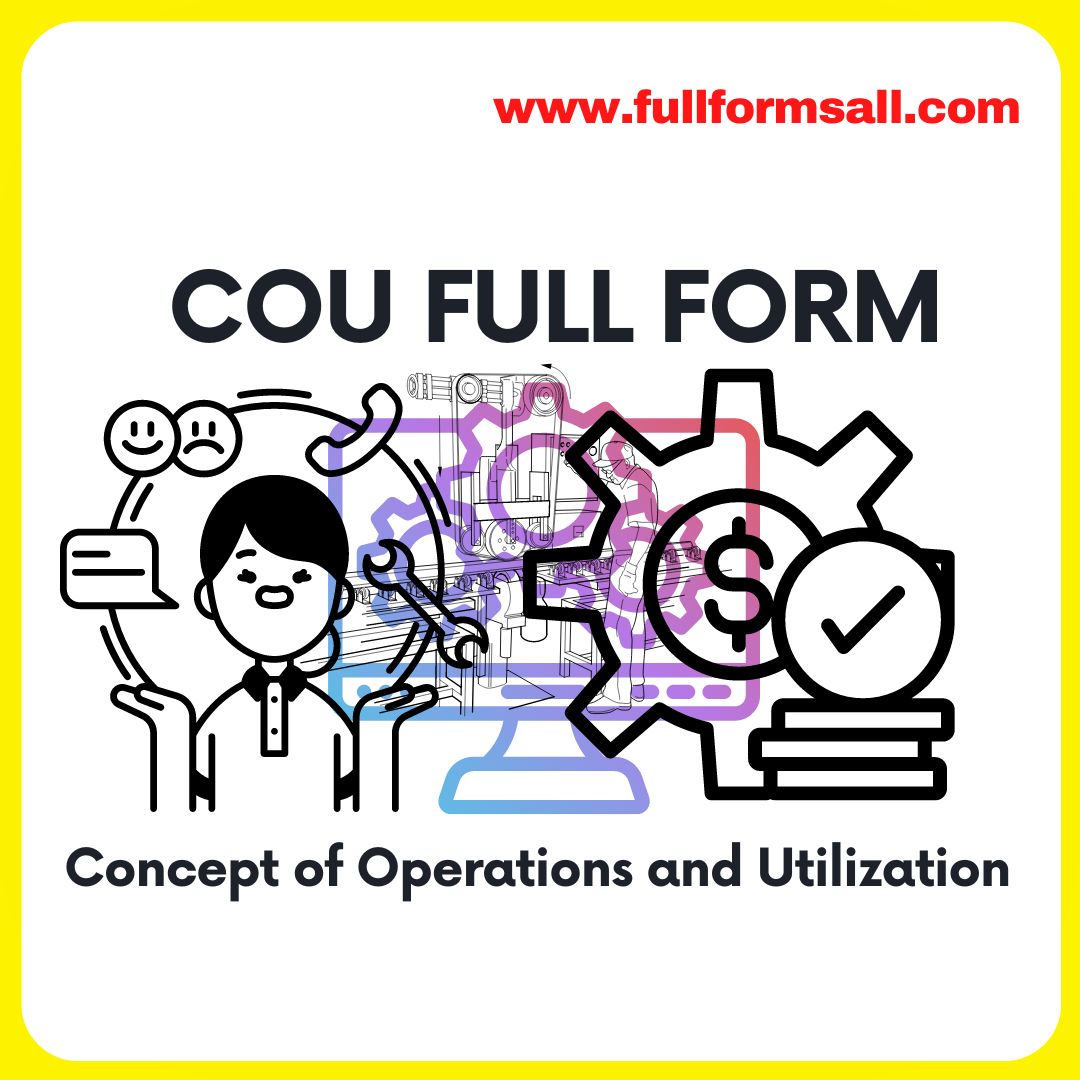In this article you get to know about COU full from and other different abbreviations of COU in various fields. COU full form refers to Concept of Operations and Utilization.

The concept of operations is a document that outlines the overall approach, strategy, and objectives for a project or operation. It is a critical component of project management and provides a clear understanding of how a project will be executed and what the expected outcomes are. The purpose of a CONOPS is to provide a common understanding and agreement among all stakeholders about the project’s goals, objectives, and approach. A CONOPS document typically includes a description of the operational environment, the stakeholders involved, the resources required, and the timeline for the project. The operational environment describes the physical, social, and political context within which the project will be executed. It includes factors such as geographic location, weather patterns, cultural norms, and legal requirements.
The stakeholders involved in a project can include individuals or groups with a vested interest in the project’s success, such as clients, investors, project sponsors, project team members, and end-users. The CONOPS document identifies these stakeholders and outlines their roles and responsibilities in the project. The resources required for a project can include personnel, equipment, materials, and financial resources. The CONOPS document identifies the resources required and outlines how they will be acquired, deployed, and managed throughout the project lifecycle.
The timeline for a project outlines the key milestones, deadlines, and deliverables that must be achieved within a specified timeframe. The CONOPS document provides a clear roadmap for the project’s timeline, including the start and end dates for the project, the duration of each phase, and the critical path for achieving project goals and objectives.
Effective utilization of resources is crucial to achieving the project’s goals and objectives. Utilization refers to the effective use of resources or assets to achieve a specific goal or objective. In the context of a CONOPS, utilization refers to the ways in which resources will be deployed to achieve the project’s goals and objectives. This includes how personnel, equipment, and materials will be used to carry out specific tasks, and how those tasks fit into the overall project plan.
Effective utilization of resources requires careful planning and coordination, ongoing monitoring and evaluation, and the ability to make adjustments as needed. The CONOPS document provides a framework for effective utilization by outlining the project’s goals and objectives and the resources required to achieve them. It also provides a clear roadmap for how those resources will be deployed over time. CONOPS document also provides guidance for decision-making throughout the project lifecycle. This includes identifying potential risks and challenges that may arise and outlining contingency plans for addressing them. By providing a clear roadmap for how the project will be executed, the CONOPS helps ensure that all stakeholders are on the same page and working towards the same goals.
Monitoring and evaluation of project performance are essential to effective utilization of resources. This involves tracking progress towards goals, identifying areas where performance is falling short, and making adjustments as needed to ensure that the project stays on track. The CONOPS document provides a basis for monitoring and evaluating project performance by clearly defining goals and objectives, outlining resource requirements, and identifying key performance indicators that can be used to measure progress.
Effective utilization of resources also requires effective communication and collaboration among project team members and stakeholders. The CONOPS document serves as a tool for facilitating communication and collaboration by providing a common understanding and agreement among all stakeholders about the project’s goals, objectives, and approach.
The concept of operations and utilization are both critical to the success of a project. The CONOPS document provides a framework for achieving both by outlining the project’s strategy, goals, and objectives, and by providing guidance for effective deployment of resources throughout the project lifecycle. Effective utilization of resources requires careful planning, ongoing monitoring and evaluation, and the ability to make adjustments as needed to ensure that the project stays on track. The CONOPS document serves as a tool for facilitating communication and collaboration among project team members
Different abbreviations of COU in various fields are as follows
| Term | Abbreviation | Category |
| COU | Certificate of Use | Business |
| COU | Check out the Unit | Business |
| COU | Context Of Use | Business |
| COU | Conditions Of Use | Business |
| COU | Cardiac Observation Unit | Medical |
| COU | Central Operable Unit | Medical |
| COU | Cable Order Unit | Computing |
| COU | Curso De Orientación Universitaria | Academic & Science |
| COU | Council of Ontario Universities | Academic & Science |
| COU | Cable Order wire Unit | Military and Defence |
| COU | Counting On You | Misc. & Others |
| COU | Cingular Official Use | Misc. & Others |
| COU | Calendar of Updates | Misc. & Others |
| COU | Continued Opioid Use | Misc. & Others |
| COU | Crypto Obor and Usury | Misc. & Others |
| COU | Central Operation Unit | Misc. & Others |
| COU | Collaborative Organization Unit | Misc. & Others |
| COU | Change Of Use | Misc. & Others |
| COU | Creative Opportunities Unlimited | Misc. & Others |
| COU | Close Observation Unit | Misc. & Others |
| COU | Center of the Universe | Misc. & Others |
CONCLUSION:
Dear reader in this article you get to know about COU full from and COU term used in various other fields, If you have any query regarding this article kindly comment below.